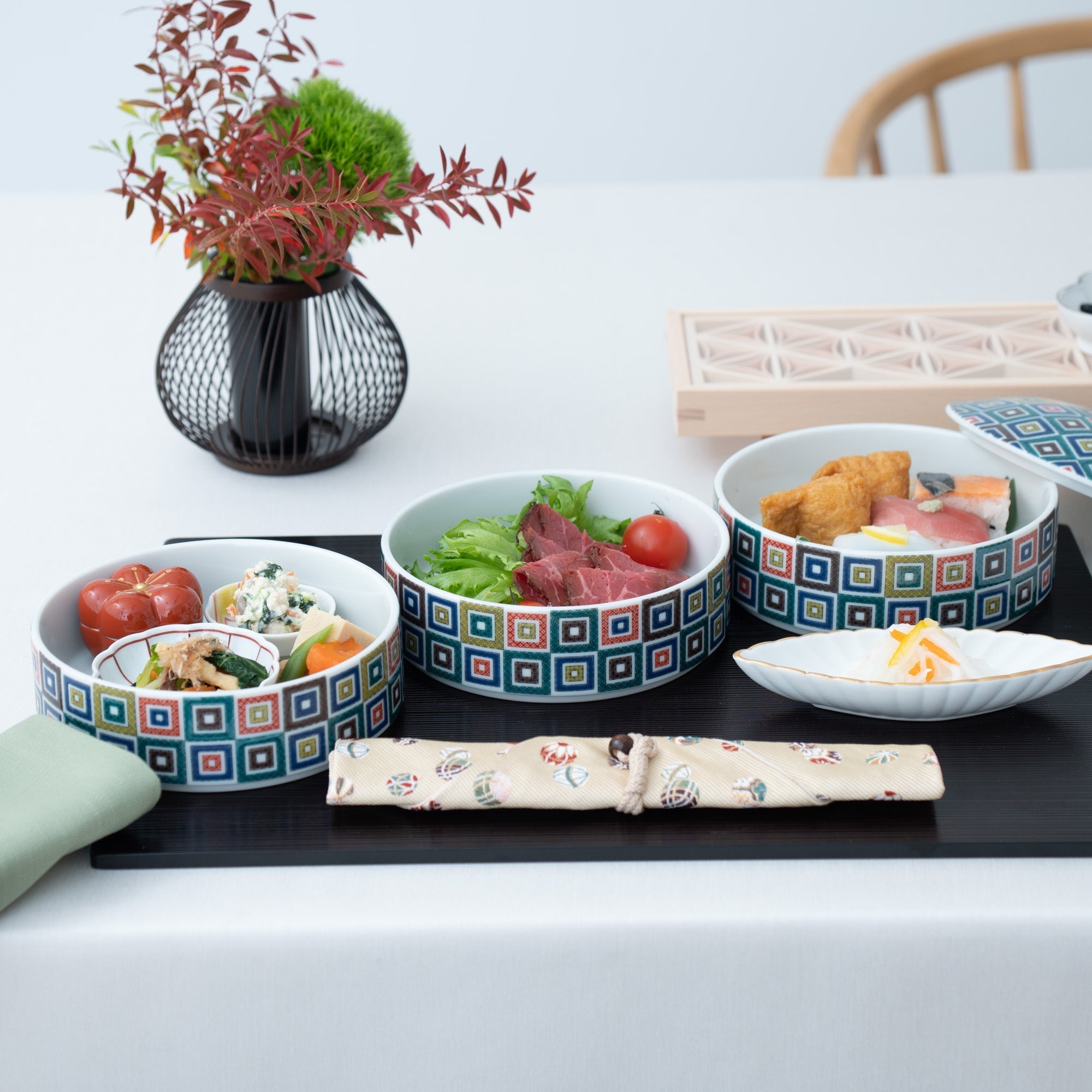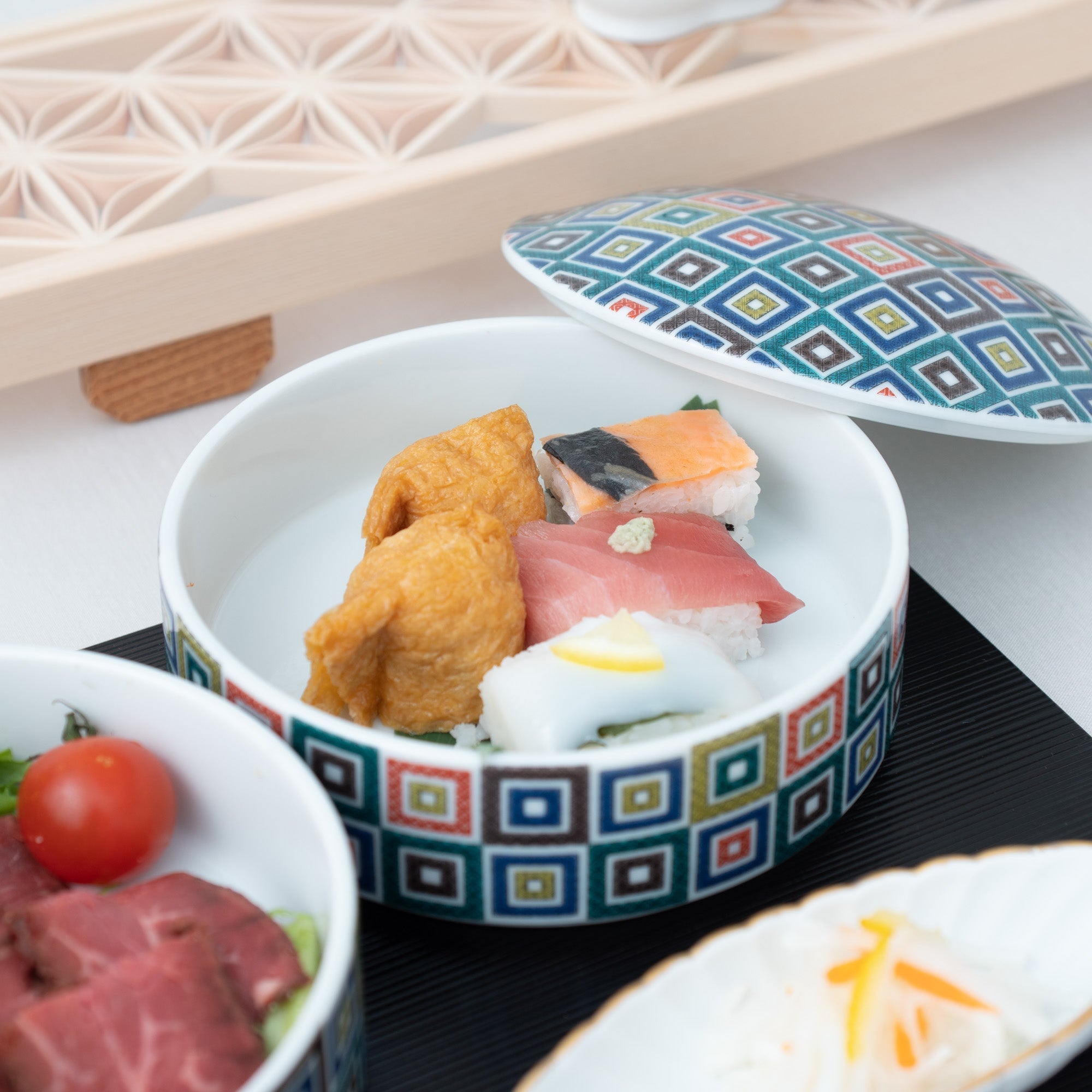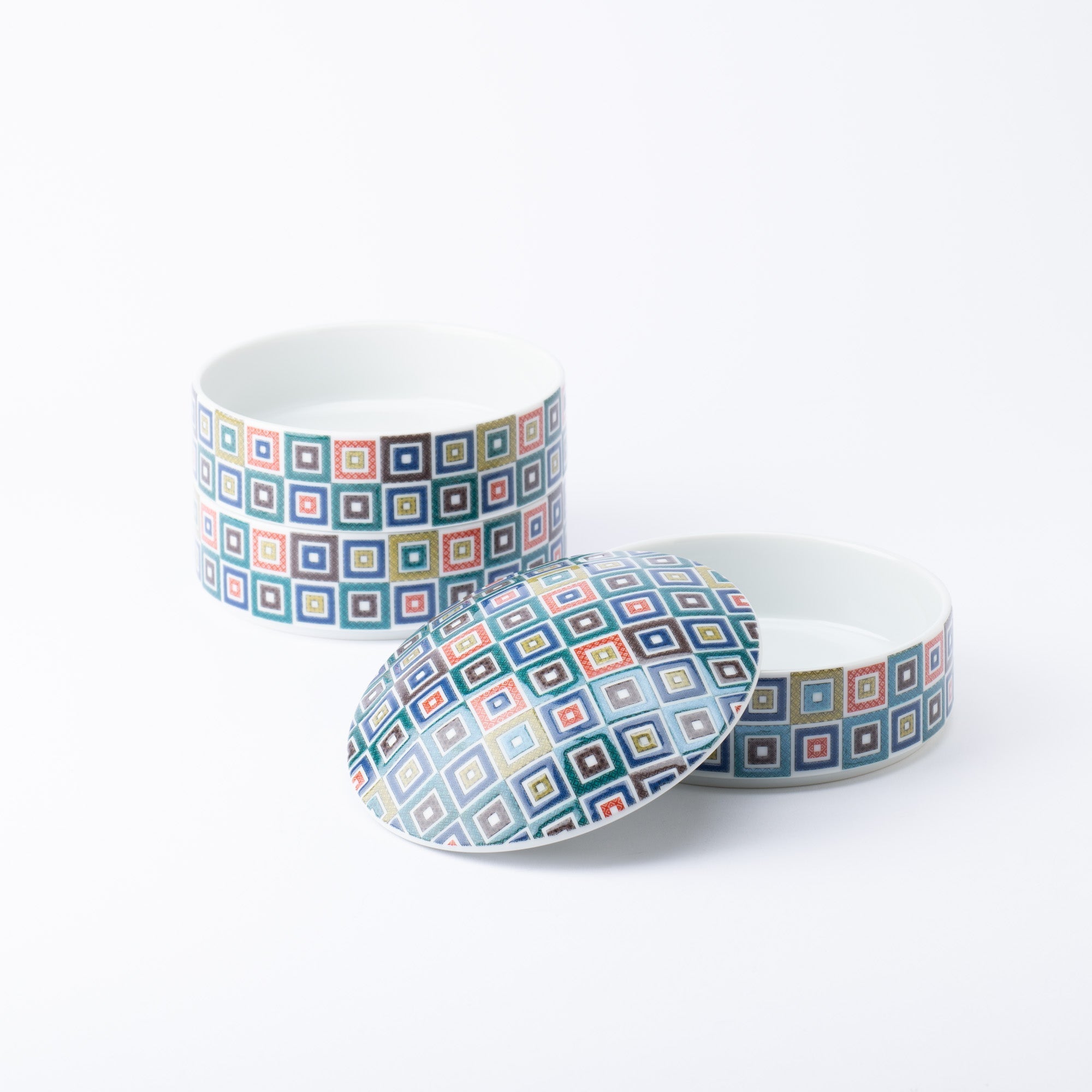



















Color Tiles Three Tiers Jubako Bento Box
Estimated Shipping Widget will be displayed here!
This gorgeous three-tiered jubako bento box has a Japanese traditional tile pattern all over the box.
This is the oldest geometric pattern in Ko-Kutani. At first glance, it appears to be a simple repeating square pattern, but inside the square are finely drawn small patterns with various patterns such as cloisonne, round, and diamond patterns.
This three-tiered food box is a great item to serve a large portion of food that can be made ahead of time. Decorate your table with this food box as a center piece filled with appetizers or charcuterie. You can put various types of sushi or onigiri rice balls in each tier to have an indoors picnic at home. A variety of desserts packed inside this food box would be an eye-catching item on your table when hosting a party.
DETAILS
| Quantity | 1 |
| Size |
[Whole set] D 15.5 cm (6.1 in) × H 15.5 cm (6.1 in) Internal Dimension : [Each tier] D 14.2 cm (5.6 in) x H 3.3 cm (1.3 in) |
| Material | Porcelain |
| Package Type | Paper box |
| Microwave | Yes |
| Dishwasher | Yes |
Maker / Brand
Seikou Kiln, founded in the early Taisho era (1912–1926 CE) in Nomi City, Ishikawa Prefecture, has long been dedicated to the art of Japanese overglaze painting for Kutani ware. Through years of research, the kiln perfected a high-quality technique for transferring designs and patterns using in-house printed sheets. This method preserves the transparency of glassy glazes and the depth of thick overglaze paints, achieving the same richness as traditional hand-painting. Their work has earned prestigious accolades, including recognition in the Japan Tourism Agency's Charming Japanese Souvenir Contest.

Crafts
Kutani ware is a pottery produced in the Kaga region of Ishikawa Prefecture, with a history spanning over 350 years. It is characterized by the heavy brilliance of the five colors of navy blue, red, purple, green, and yellow that are applied to the bold and daring lines. Its long history has evolved through the tireless efforts and enthusiasm of people who have sought innovation while maintaining tradition.

Choose options




















Estimated Shipping Widget will be displayed here!
Jubako Bento Boxes
Jubako bento boxes make cuisine instantly look more elegant. Just pack the box to instantly elevate any meal. As a delightful hosting bonus, they also create a sense of excitement when the lid is opened. Here we introduce you to some special jubako boxes that are stylish and will change the atmosphere of your dining table into a gorgeous one.


